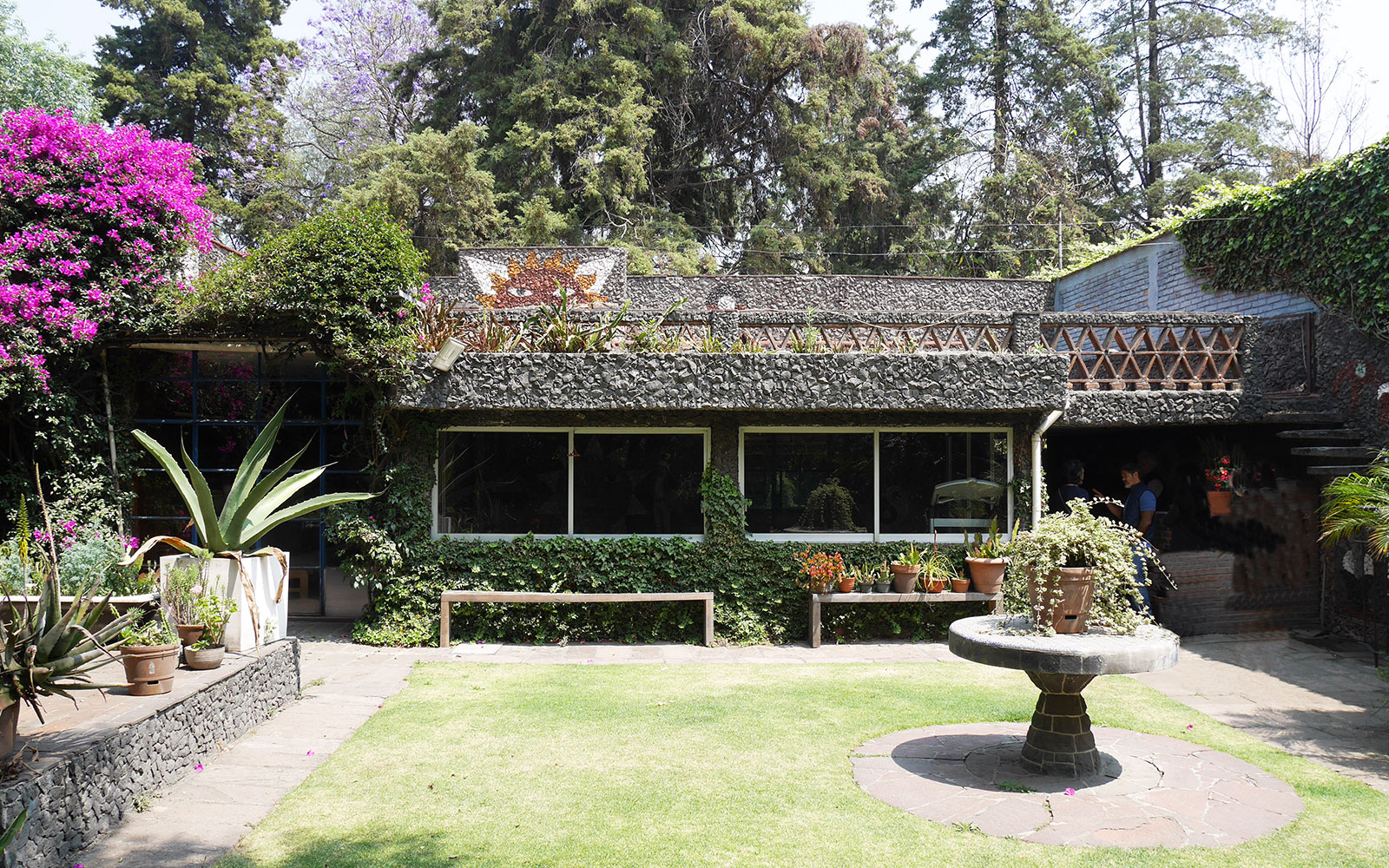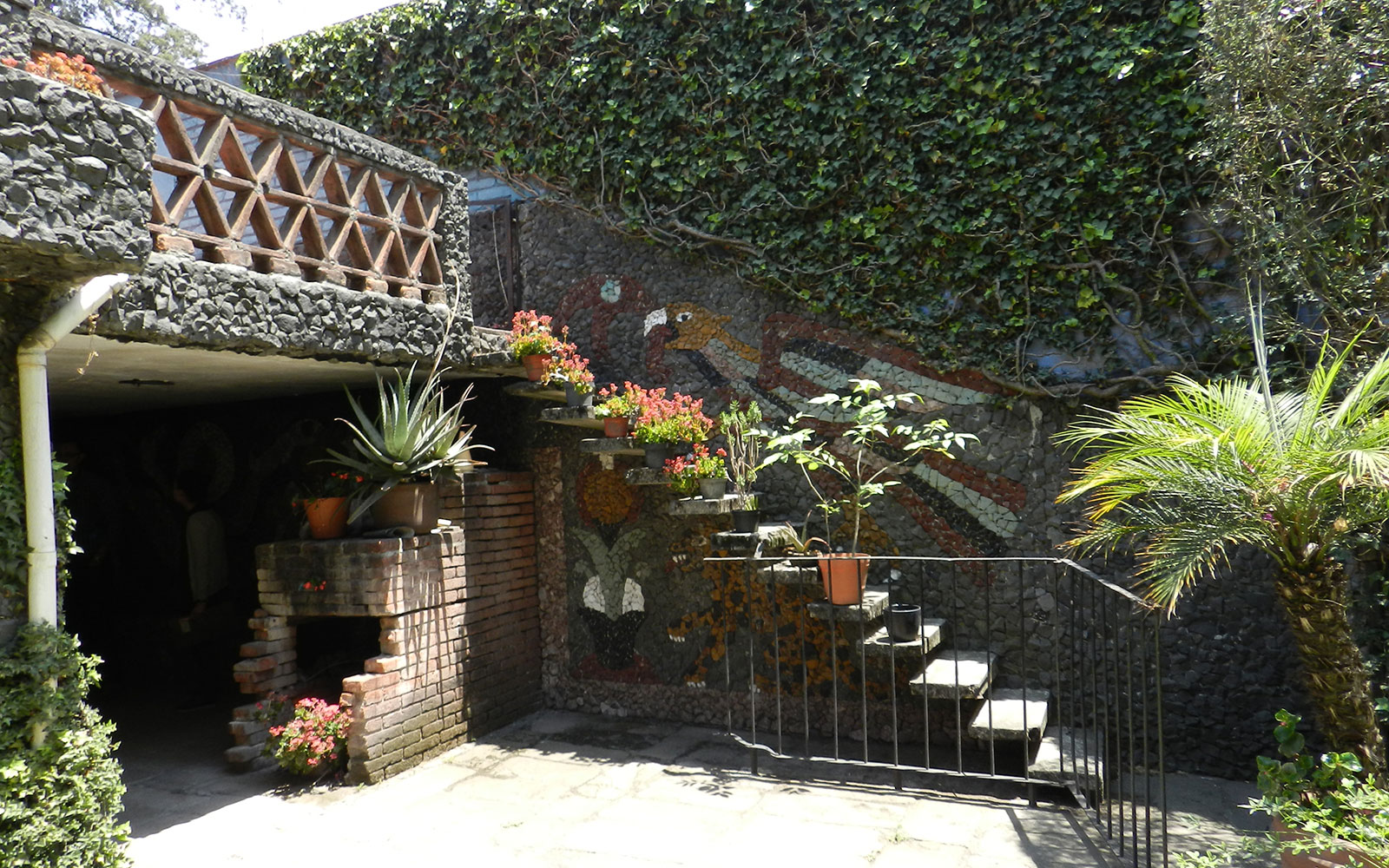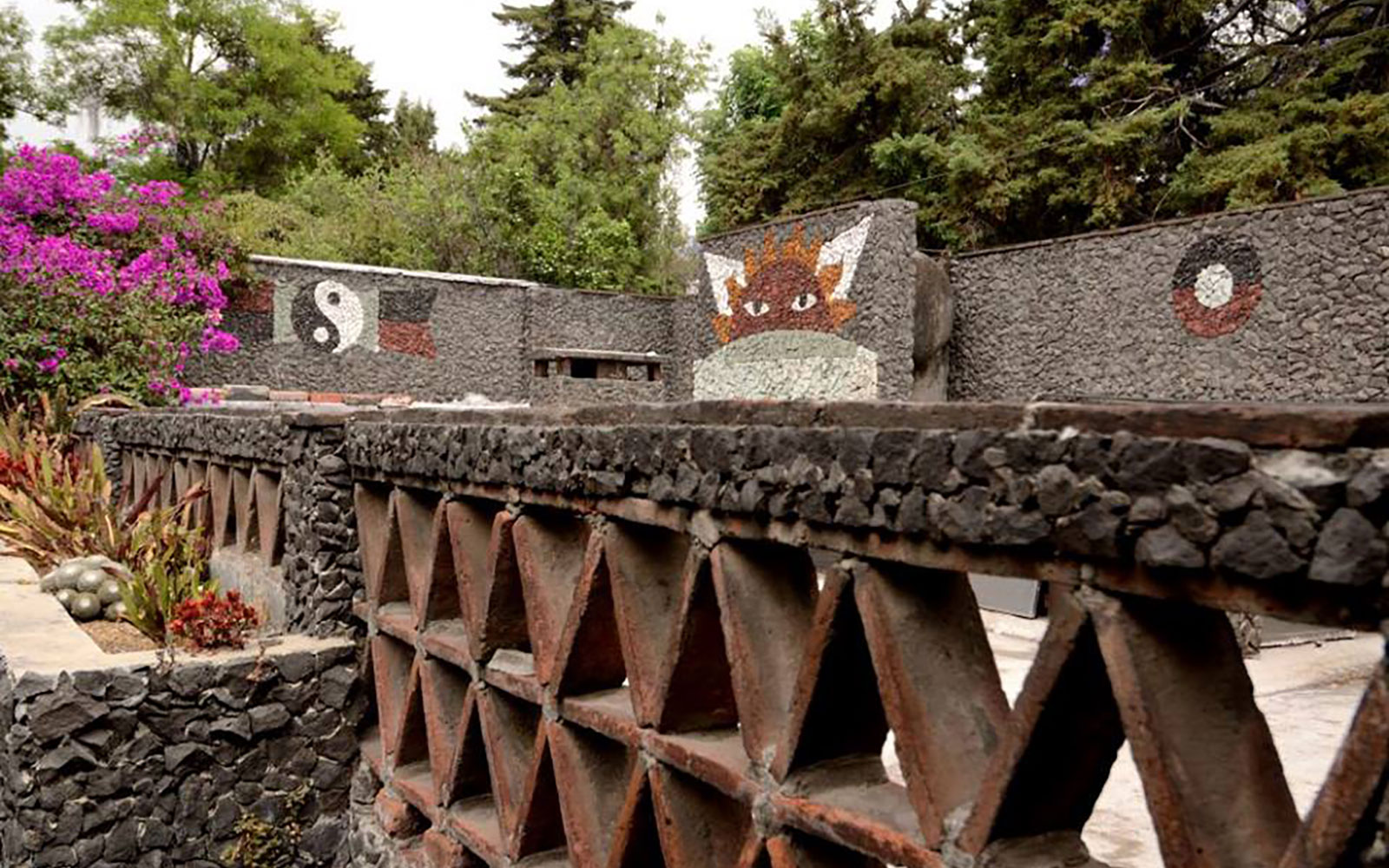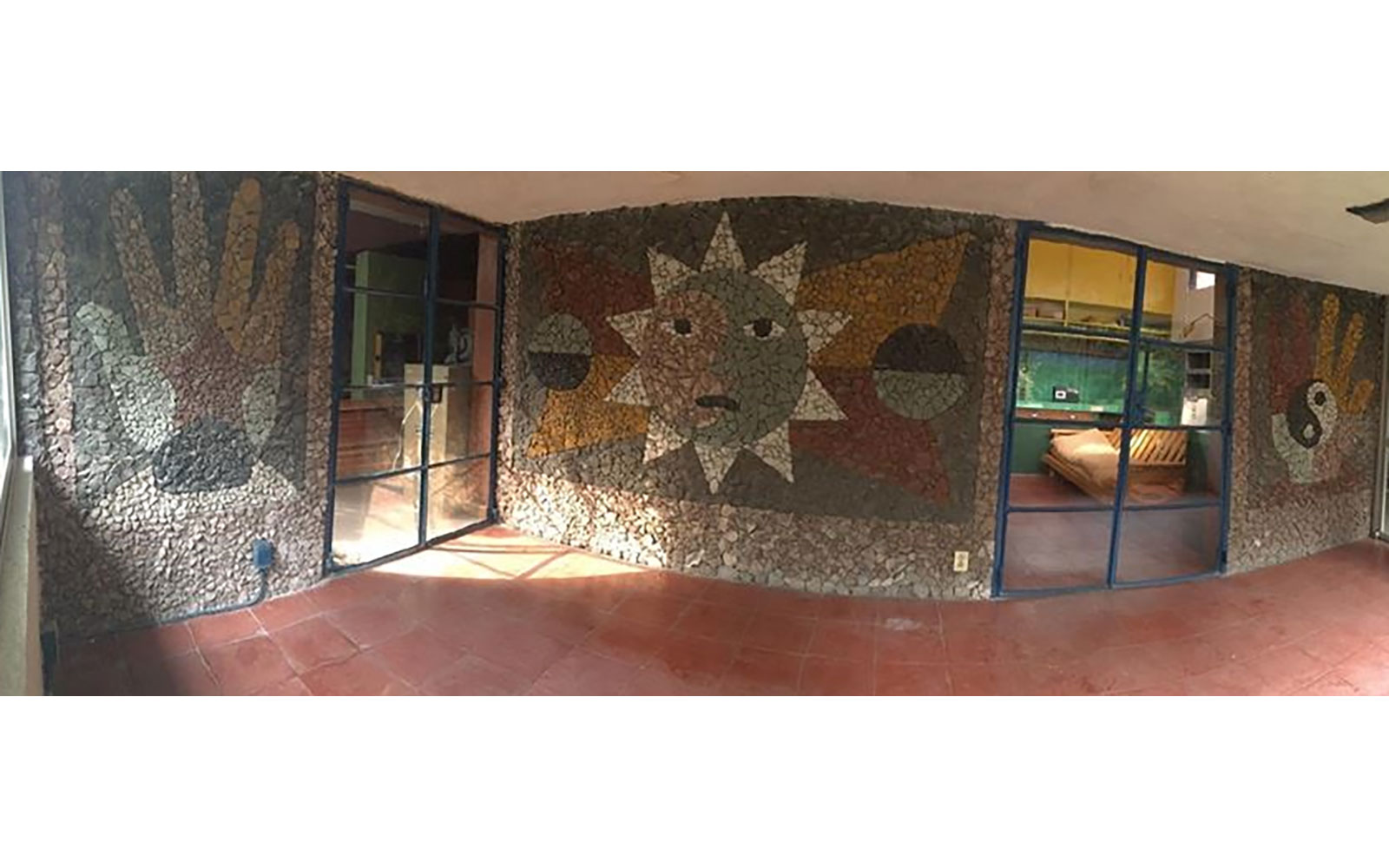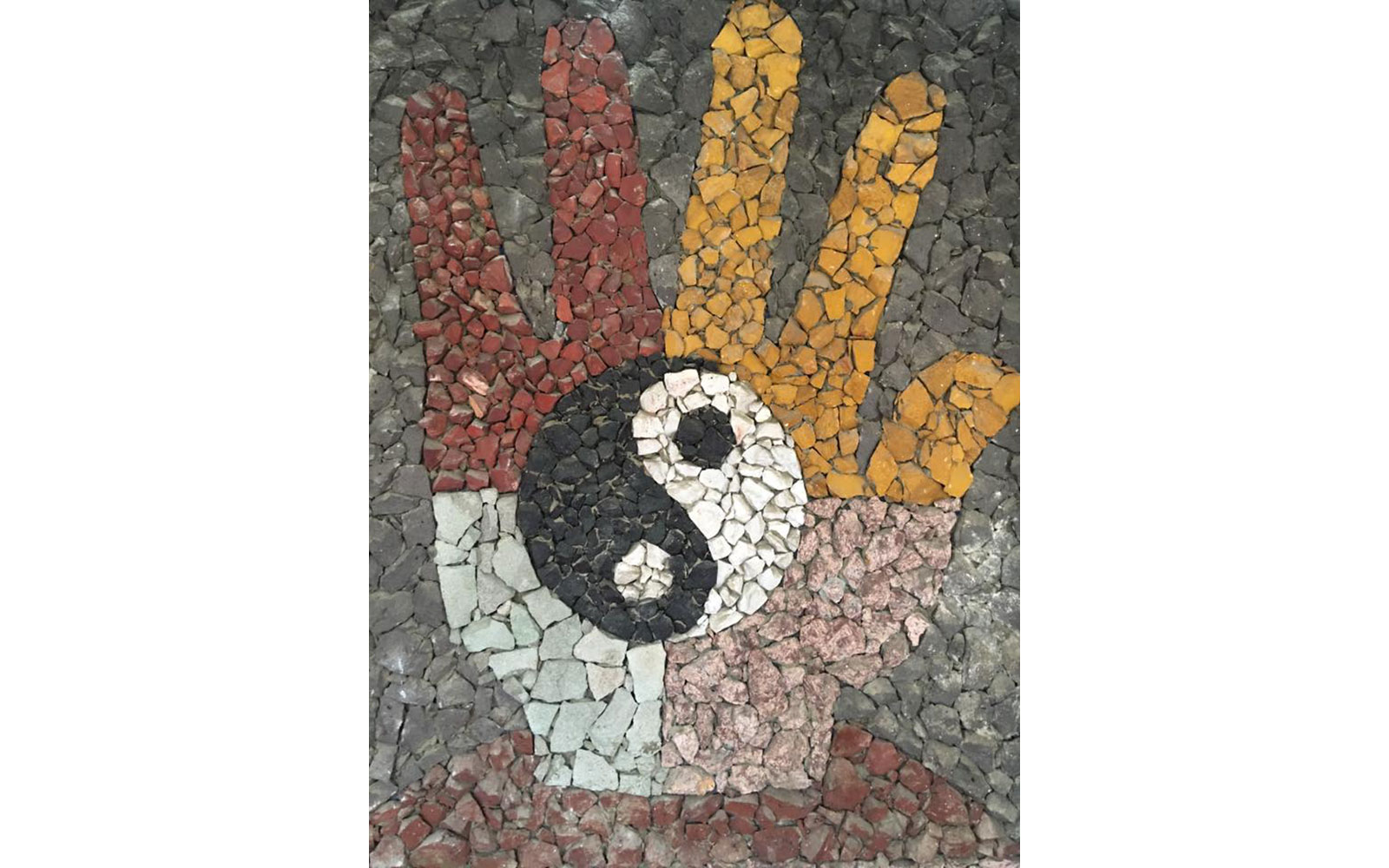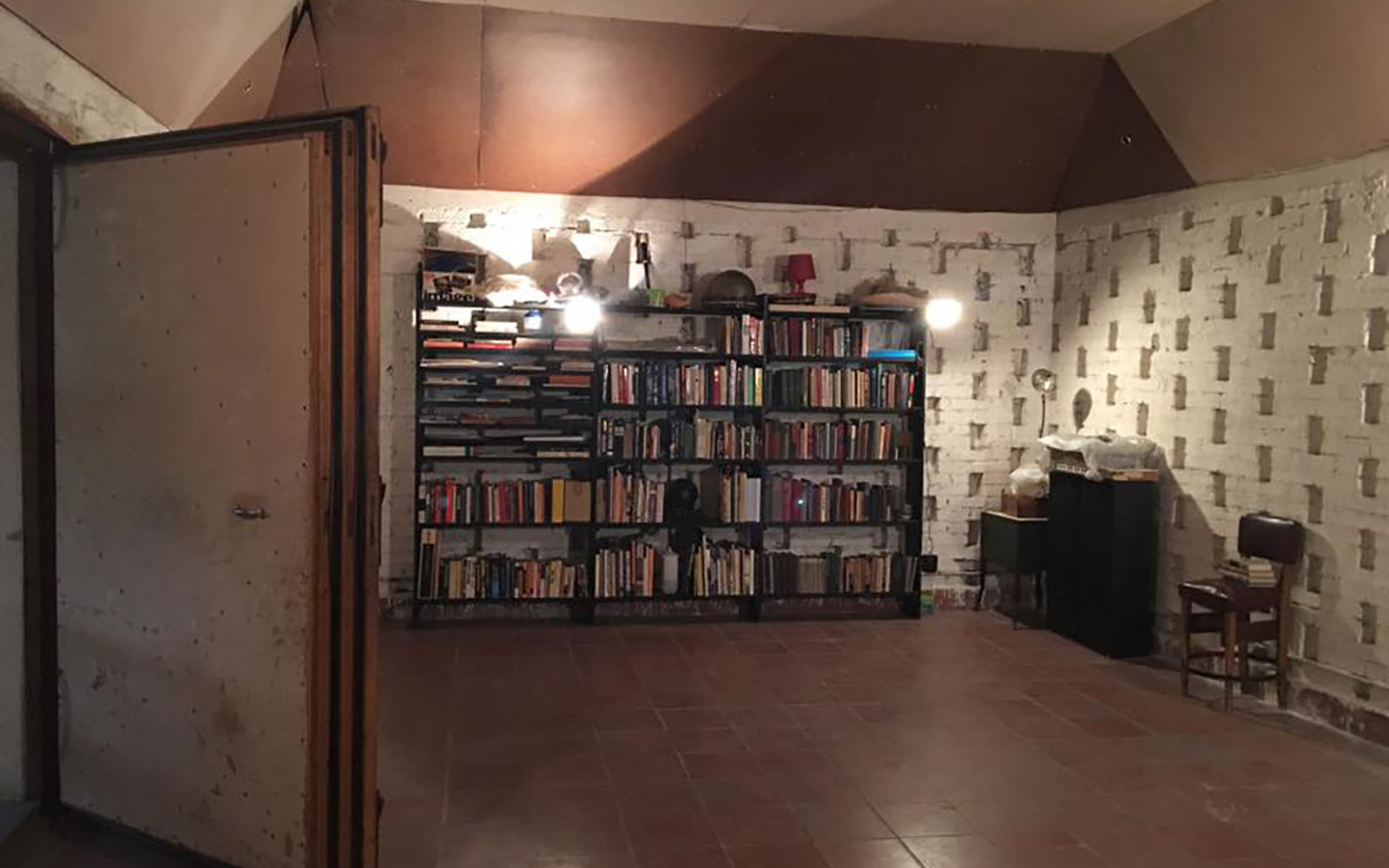Conlon Nancarrow Home
Architect: Juan O’Gorman
Year of completion: 1940
Location: Mexico-City, Mexico
On the radar
Latest update 12 December 2019
The Nancarrow House, photographed by Marco Velasco.
Preserving the Nancarrow House-Studio
Adriana Sandoval makes an eloquent case for the importance of Juan O’Gorman’s last building – now at a critical juncture in its history – in the architectural and cultural heritage of Latin America.
The work and studio of Conlon Nancarrow (1912-1997), and the residential home of the Nancarrow-Sugiura family, the Nancarrow House-Studio displays an architectural design that is linear, understated, functional and perfectly integrated with the landscaping. In the two phases of its creation, Juan O'Gorman (1905-1987), the architect in charge of most of the design, made this his first attempt at an organic architecture (1948), as well as the conclusion of his long career in building construction (1972).
Seen as a historical site, the Nancarrow House is where Conlon Nancarrow created his musical output. In the house’s studio this genius of multiple tempos installed and began to use the two mechanical pianos that allowed him to develop his compositions and the unique artistic personality that continues to amaze musicians, researchers, specialists and the public at large. At Nancarrow, he was also visited by fellow composers like Aaron Copland (1900-1990) and John Cage (1912-1992) from the USA, along with many others from Mexico and the rest of the world. It was in this same studio that the first recordings were made which led to Nancarrow’s music becoming known in Europe and the USA.
The artistic concepts which Juan O’Gorman brought to the design of the Nancarrow House-Studio combine the sense of light, austerity and understatement seen in his other works, such as the studios for Diego Rivera and Frida Kahlo (1932), along with the intensity and poetry of two of his most famous works of the 1950s; his own house-studio at Av. San Jerónimo (1) and the Central Library (2) at the National University, a building that was declared a Patrimony of Humanity in 2007 along with the University’s main campus.
![]()
House of Juan O'Gorman, 1952, San Jerónimo 162, Coyoacán, Mexico City (destroyed).
![]()
Central Library, by Juan O'Gorman, Juan Martinez de Velasco and Gustavo Saavedra, 1952, Ciudad Universitaria, Coyoacán, Mexico City.
An important architect
Juan O’Gorman occupies an important position in 20th-century architecture. He revolutionized architecture in Mexico and Latin America with the construction of the first totally functionalist house and living space (1929), and he is considered one of the few organic architects from this region whose work appeared in professional publications in the 1950s. In the first stage of its construction, the exterior of Nancarrow was decorated with murals of natural coloured stone, making it the second place in Mexico City where one can visit a unique visual and design by O’Gorman (the other being the stone mosaic murals of the Central Library). Also, the fact that the second stage of its construction marks O’Gorman’s last architectural work makes it invaluable not only from a chronological perspective but also, in terms of its design, as a concluding statement of an intensely personal architectural aesthetic.
Juan O’Gorman’s authorship also connects the Nancarrow House with the Anahuacalli House-Studio of Diego Rivera (3); the Study of Frida Kahlo (4), the Hotel Posada in Taxco, Guerrero; the Convention Center in San Antonio (5), Texas and the Tupahue Spa in Santiago, Chile (the latter two being his only works outside Mexico). These creations present architectural solutions in the case of the Anahuacalli building and decorative and dimensional ones in the other examples.
![]()
Museo Anahuacalli by Diego Rivera and Juan O'Gorman,1964, Coyoacan, Mexico City.
![]()
Studio of Frida Kahlo by Juan O'Gorman and Diego Rivera, 1944, Coyoacan, Mexico City.
![]()
Lila Cockrell Theater, San Antonio, Texas by Juan O'Gorman, San Antonio Texas, U.S.A.
Friendship and dialogue
Another aspect of the house and studio is more personal: the long-standing friendship between Conlon Nancarrow and Juan O’Gorman, an ongoing dialogue between two personalities with highly defined critical visions who each revolutionized the intellectual scene in the 20th century thanks to their creativity and humanism. Contemporary Mexico has a rich and invaluable history, and the Nancarrow-Sugiura family’s own ongoing efforts to preserve the house make it possible for us to understand, in great detail, the complex musical world that Conlon Nancarrow created. It reflects a dialogue between two exceptional individuals, Juan O’Gorman and Conlon Nancarrow – a dialogue which is manifested in a magnificent architectural work. It offers posterity an experience of a deep sense of the modern fusion of two artistic disciplines, and allows us the opportunity to understand a lesser-known aspect of Mexico’s historical legacy.
An architectural high point
The first construction phase of the Nancarrow House-Studio, situated in the middle part of Juan O’Gorman’s ample body of architectural work, contains the symbolism that he developed to its maximum expression on the walls of the Central Library of the National University. This makes it a second location where one can appreciate this decorative technique, representing a unique and original achievement at the beginning of the second half of the 20th century in Mexico. In a parallel way, the Nancarrow House-Studio is similar in its relevance to the first functionalist house that O'Gorman created in 1929, since, without a doubt, it’s in this property created for Conlon Nancarrow that O’Gorman – for the first time – realized an organic residential design style. This presaged the even more radical residential statement that was O’Gorman’s own house-studio in San Jerónimo, which no longer exists.
The Nancarrow House-Studio is laid out on an irregular plot of land with a semi-humid climate. House and setting are integrated into a unified whole via the height of the walls, linear forms, the transparency of the large windows, the façades covered with colourful volcanic rock, along with an ‘amiable’ relationship with the flora and fauna of the region. Austere in its design, it evokes Mexican vernacular architecture and its shapes echo a classic Meso-American style. The Nancarrow House-Studio embodies these aspects with its attractive crenellations and its stately ‘tableaus’ with their pre-Hispanic symbolism, thus making it a work of multi-faceted interest and value.
The influence of Fallingwater
The importance of Frank Lloyd Wright (1867-1959) should be stressed as an influence on O’Gorman’s developments in the field of organic architecture. By 1939, O’Gorman already knew the (at that time) newly built house designed by Wright in Pennsylvania: Fallingwater. This came about because of a non-executed commission offered by Edgar Kaufmann of a mural painting for the Jude Youth Cultural Association in Pittsburgh.
O’Gorman underscored, more than once, the profound and positive impressions he had of Wright’s architectural skills after having visited the weekend house owned by the Kaufmanns. This impression was derived essentially from two important factors. The first was the successful and harmonic integration of men and environment as a guideline of architectural design and construction. The second was the importance and influence, which pre-Columbian and, principally, Mayan architecture had on Frank Lloyd Wright. The construction of mostly horizontal buildings, the use of colours and the planned architectural integration between construction and garden sound some similarities between early living spaces by Wright and the Conlon Nancarrow House-Studio by O’Gorman. At the same time, these similarities renew the participation of Latin America in the development of architecture in an intrinsic way, concerning a renewal of identity after the colonization and independence wars of countries across the continent.
Preserving the house for the future
Nowadays, the Conlon Nancarrow House-Studio is in a period of transition. The Nancarrow-Sugiura family is trying to find someone to take care and preserve the house. Ideally, the property would find a new public or private owner dedicated to preserving and using the house and its inner spaces as a whole. It might be presented as a centre of investigation, documentation, and student or academic stays; or it might be used as forum for concerts, exhibitions, conferences, or for academic and cultural purposes in general. The Nancarrow-Sugiura family does not reject the idea of the house being sold to a private individual, insofar as this does not present an obstacle to its preservation.
Long after its construction, the Nancarrow House-Studio is still in an excellent state of preservation, having only undergone a few modifications due to the health problems Nancarrow faced near the end of his life. Whoever (along with academic and cultural institutions) would assist in the acquisition and official designation of the Nancarrow House-Studio, could give a new boost to the national image, by contributing to the preservation of a specific and important period in the history of Latin American and Mexican architecture. This is being studied these days with great interest in our universities, as well as in the United States, Spain and Japan.
It would also mark a new investigative approach to the study of the tangible legacy of both Juan O’Gorman himself and of Conlon Nancarrow, not only as important figures in the creative scene of the 20th century, but also from a more personal and human perspective. Objectively speaking, the Nancarrow House-Studio can be understood as something of a ‘missing link’ in the study of the life and work of both Conlon Nancarrow and Juan O’Gorman – one which clarifies certain gaps in our understanding of both artists.
Similarly, the present document might serve to the purpose of establishing contact between Mexican and international communities which are interested in preserving important buildings of the 20th century. This document is addressed also to private individuals, who might be interested in knowing more details about the house and its history.
We still have time to avoid the errors of history – as in 1969, when Juan O’Gorman’s San Jerónimo House-Studio was destroyed. We still have the possibility of affirming the Nancarrow-Sugiura family’s intention that their efforts to preserve the Nancarrow House-Studio be taken over by a public institution with ample capabilities for continuing and expanding its preservation. Let us not forget too that we have the possibility of rescuing from historical oblivion the legacy of men like Conlon Nancarrow and Juan O’Gorman, who revolutionized the world around them, technically, aesthetically and in terms of human values.
Adriana Sandoval, of the Foundation Project Conlon Nancarrow House-Studio, is a professor and researcher in Mexican art and architecture and a specialist in the work of Juan O'Gorman.
![]()
Juan O'Gorman selfportrait, 1950, fragment.
![]()
Juan O'Gorman in the studio of his house in San Jerónimo by Juan Guzmán, 1950
Conlon Nancarrow Home
Juan O’Gorman
1940, Mexico
